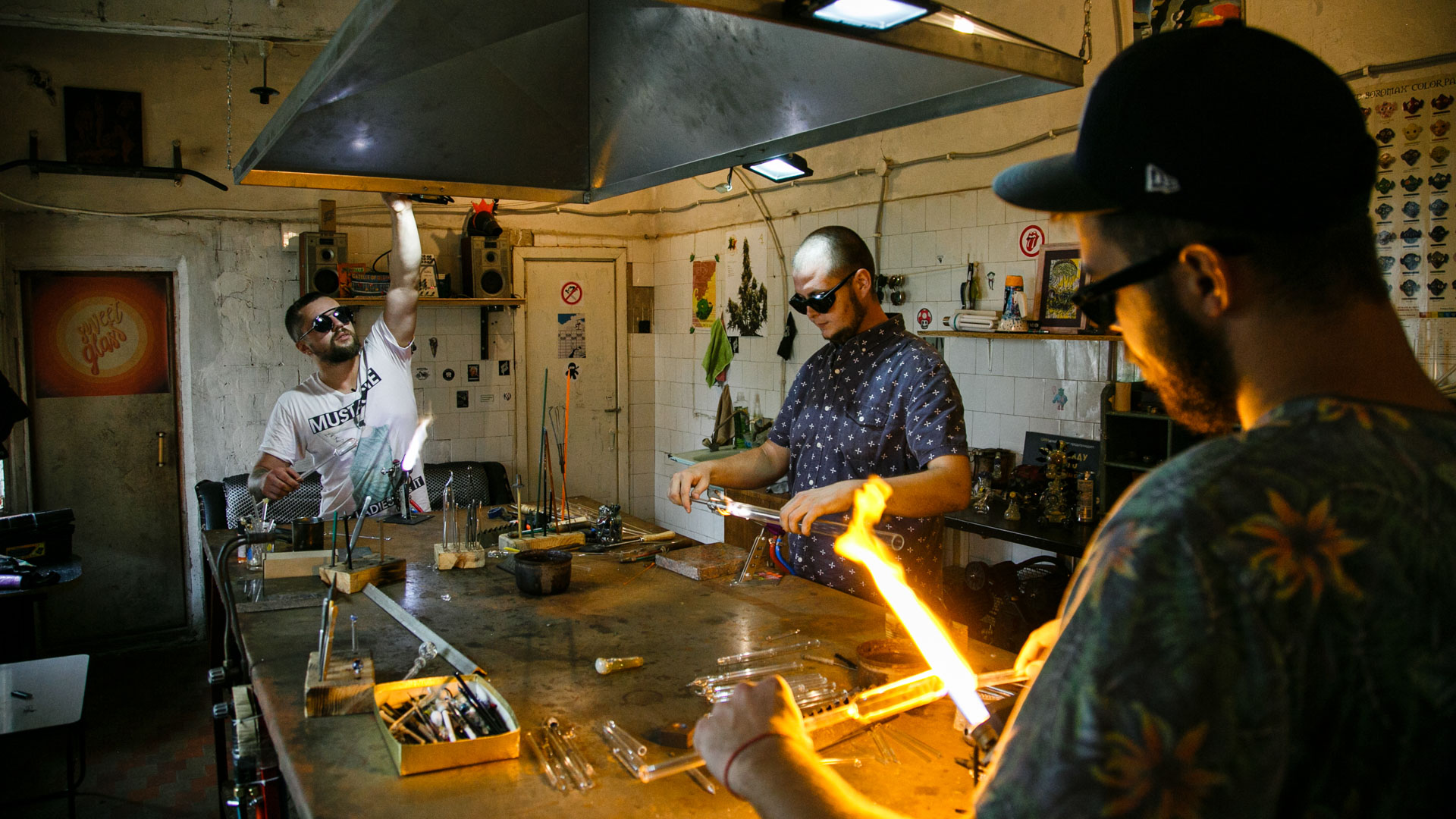In Sosnivka, a mining town on the border of Volyn and Halychyna, five guys have taken the risk of opening their own glassware studio, where they mostly make smoking devices — pipes and hand-crafted bubblers. It all started in a small garage, with poor-quality equipment but a strong desire to create something special. The town of Sosnivka has only existed since 1955, when a mining settlement was established here. The guys are a good example of how to create your own value-added business, even if you live in a town that has always depended on the extraction of natural resources.
Their work is still subject to misperceptions: that they are doing something criminal and illegal, related to drug-taking. The guys at Sweet Glass Studio are trying to counter these stereotypes. They translated and dubbed the movie Degenerate Art, which looks at the history of glassblowing in the USA, the struggle against those who want to ban the production of bubblers, and the idea that these objects are works of art.
How not to be a miner
A bubbler is a smoking device made of glass; the smoke is filtered and cooled as it passes through water. Bubblers can vary in colour and shape. Yaroslav Babiy says they took a risk in deciding to produce these objects:
— We literally started from the fact that we had nothing; we only had the idea.

There are now five guys in the Sweet Glass team: Yaroslav Babiy, Roman Husar, Ivan Meda, Yakiv Balashov, and Dmytro Ams. Their idea is what unites them — some of them did not even know one another beforehand. It was Roman Husar who came up with the idea of blowing glass, but only Yakiv Balashov had experience in glassblowing: he used to make small animal figures and Christmas toys out of glass, using special wires. However, he had never worked with pipes, so was interested in trying. Yaroslav Babiy introduced Roma to Yakiv; later on, Dmytro and Ivan joined the team. They have been working together for two and a half years. This is the story of how, with one idea and almost no glassworking experience, the only glassblowing studio in Ukraine to produce smoking devices was born. They tell the story of what they did — and still do — in order not to work in the mines. According to the guys, you have to have been born and raised in a mining town in order to understand them.
The town of Sosnivka appeared on the map in the middle of the last century, when there was a need to provide housing for the workers of the newly-created mines. Coal mining is still a major part of the local industry. Though the region was once considered rich, the mines are now closing and the number of jobs is in decline. To find work, people are forced to move abroad. The proximity to the Polish border — just 30 kilometres away — makes this an even more tempting option.
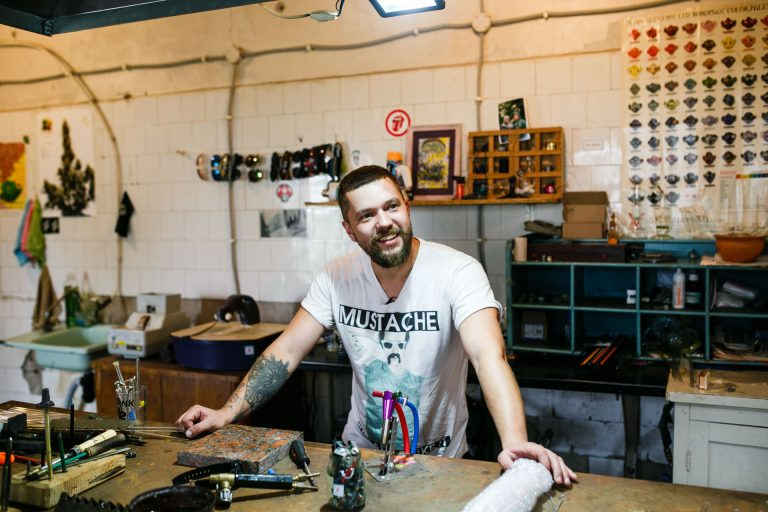
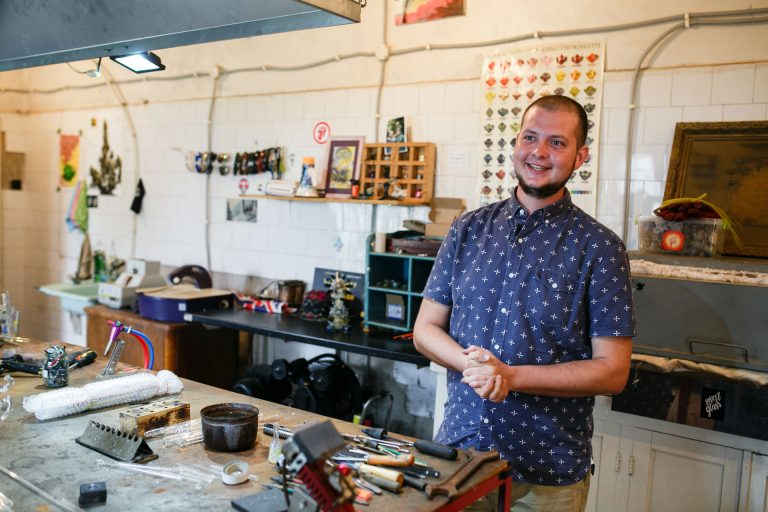
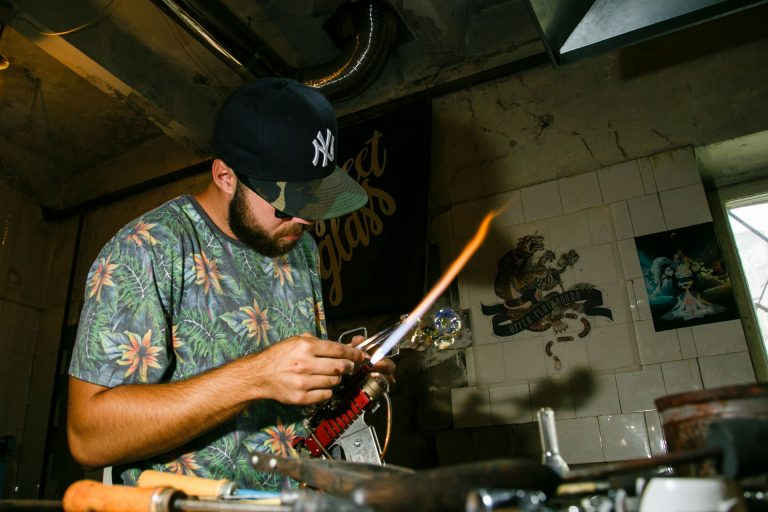
slideshow
Having understood that mining was not for them, but not wishing to leave the country, the boys opened their own glassblowing studio, gaining experience on the job:
— The work (mining — ed.) is cool and all, but it’s clear that there’s no creativity in it. And when you’re a creative person, you don’t want to expend all your energy mining coal. That’s why we’re here now.
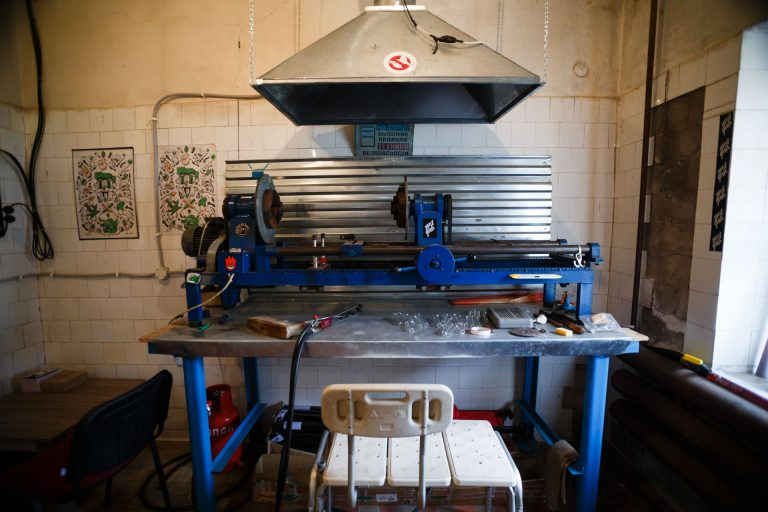
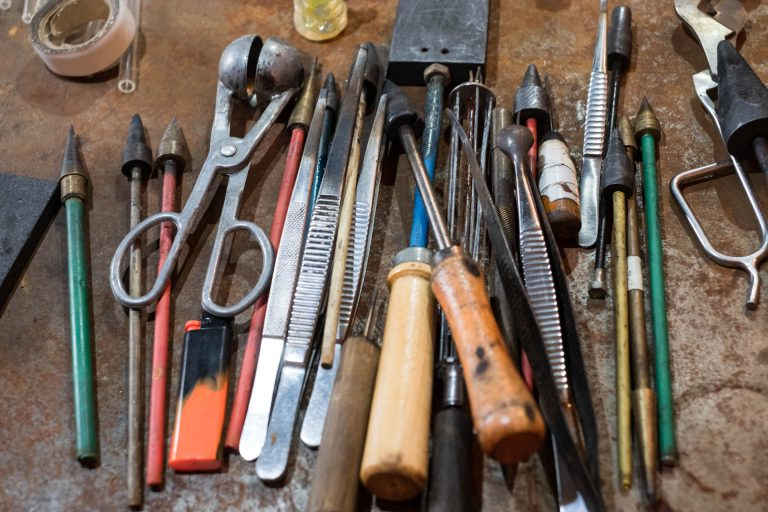
slideshow
Prior to Sweet Glass, each of the boys had tried out various jobs. Yaroslav Babiy is a law graduate, but did not want to work in the profession. He also tried his hand at being a salesman, picked blueberries in Sweden, and is still the head of an association of co-owners of an apartment building. Roma Husar is a trained musician. He laughs as he counts his diploma qualifications, never having worked as a guitar teacher, nor as the conductor of a variety orchestra, nor as a performer. He did play in various bands, though, one of which took him on tour to the USA.

The studio in Kytaihorod(Chinatown)
It took six months to bring the idea to fruition. In order to open the Sweet Glass workshop, Roman Husar had to sell his car: the money from the sale was used to repair the garage and to purchase basic equipment. The workshop is in an area the locals call Shanghai or Kytaihorod (Chinatown — tr.). It is full of unfinished buildings people use for storage, where children go to play:
— The buildings are kind of illegal, but nobody wants to fight it. People have their so-called “barns” there. We call it “Chin-tiki” or Kytaihorod.

According to Husar, their garage did not even have the exhaust hood that is required for glassblowing. The guys had to be inventive with the materials, as there was nowhere to buy them in Ukraine. The blow torches, stoves, and even the glass were purchased from abroad. The coloured glass they mostly order from the US; for the transparent glass, they were lucky enough to find the only art dealer in Ukraine who gets it from the Czech Republic.
Husar, who has effectively acted as investor, says there are no clearly-assigned roles in the team. Each of the guys eventually tries his hand at all the tasks, and the results testify to their excellent teamwork.

A Game of Fire — and Experience
The studio now has two blowtorches from Canada and one from the US. They started with a Ukrainian one, but it did not produce the right temperature and the proper flame, which, according to Roman Husar, is of paramount importance:
— The flame is key. There are different temperature modes, there are different types of flame: there’s a gentle one, but there is also a very tough one, with oxygen. Each kind of glass responds differently to the temperature of the flame.
The guys say that they use high-quality equipment and have all the necessary permits, but the result is largely dependent on the time spent working:
— The more time you dedicate to a product, the more you invest in it, the better it comes out, and the more soul it has.
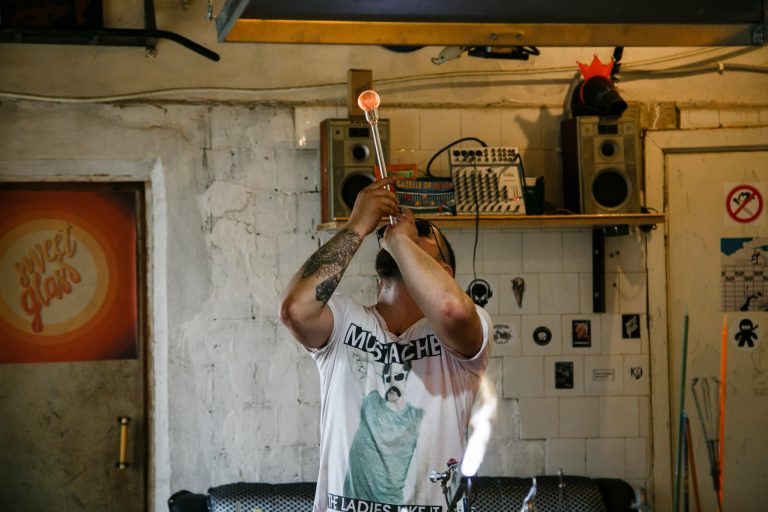
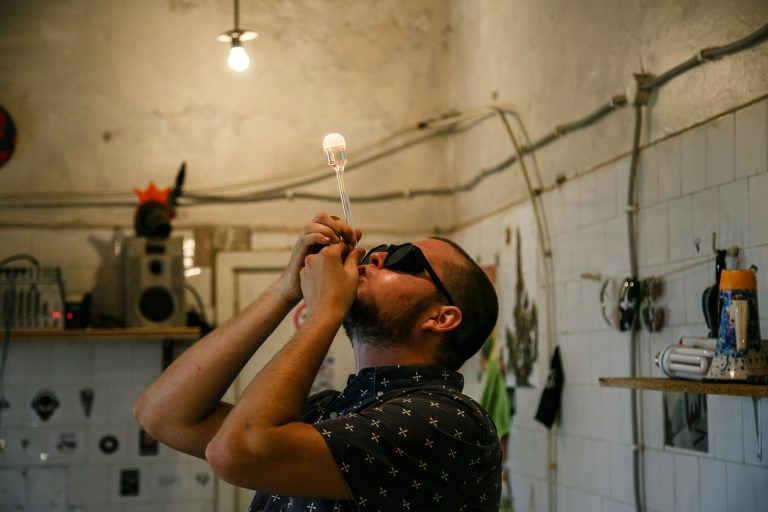
slideshow
Nowadays the guys from Sweet Glass make original creations, but they started out making basic pipes — transparent, plain, the main feature being durability. Now they boast of their complex works, including the “recycle bong” (in which the smoke circulates twice through the filtration systems). It is made using the technique of fuming, which includes the application of precious metals. Roman Husar says that bubblers usually turn black with smoke after prolonged use, making them less attractive. However, Sweet Glass products behave differently: if they contain silver, they change colour to blue-violet; the ones containing gold turn crimson.

In the USA, the term “heady pipes” is used to describe weird and wacky smoking devices. The makers focus on their aesthetic value, giving each piece a particular meaning. The recycle bong made by Sweet Glass belongs to the “heady pipes” category, although it is functional as well as beautiful. This bong is entirely handmade: it took five days to create all the parts and assemble it. The guys took about three years to attain this level of skill. They expect to sell their wares abroad, since these bubblers sell for a much lower price in Ukraine than in the US. They understand that they will not be able to sell them in Ukraine at such a high price and it will be difficult to find clients.

The Physics of Glass
When it comes to making bubblers and bongs out of blown glass, it is the USA that dictates the rules. The guys know of a similar studio in St Petersburg that is three or four years ahead of Sweet Glass in terms of technique. This doesn’t bother them, though: as Roman Husar says, it’s all about practice, and understanding the physics of glass. This doesn’t come overnight:
— We’ve faced a bunch of problems: the glass cracked, all the pieces cracked, we didn’t understand why. But we clearly lacked the necessary experience, the necessary understanding of the physics of glass. Glass has its own physics, its own laws; without obeying those, you can’t do anything.”
Yaroslav Babiy explains the subtleties of working with glass. It is softened by the flame, but not immediately: it goes from a fragile state to a ductile one, then into a liquid. While you’re working on a new product, one hand will constantly be twisting the glass tube over the fire to heat it. The temperature at one end of the tube exceeds one thousand degrees Celsius; ten centimetres from the other end, it’s already cold. If you pull the glass from the flame too abruptly, it will just fall. If you leave a sharp angle, the product will crack when cooled, and can only be saved 50% of the time.

To work with glass, you need a temperature of 600°C; its melting point is 1200–1400°C. In order to maintain the optimum temperature, they had to get a special oven. Thanks to this, the bubblers do not crack, and the pieces can be modified during the production process. It is not only the physical properties of glass that make this work so demanding. For Roman Husar, working with glass is a meditative process:
— If you come to the studio in a bad mood, you’d better not touch the blowtorch, because the glass will somehow magically begin to crack. You can’t do anything with it.
The biggest demand for the guys’ glassware products is at major music festivals. Sweet Glass sells its products via social media, works with stores in Kyiv and Kharkiv, and has its own showroom in Lviv. The guys put a lot of soul and effort into their work, so naturally they are dreaming big. Next year the team plans to take their bubblers abroad, to festivals — primarily in the Netherlands — where they will showcase their creations, made by hand in Ukraine.

